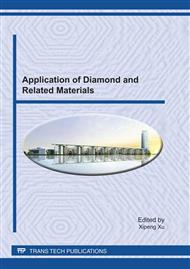p.249
p.254
p.259
p.263
p.269
p.274
p.278
p.284
p.289
Adiabatic Shear Behavior and Chip Morphology in Precision Hard Cutting GCr15 Steel
Abstract:
Precision Hard Cutting process is easy to generate periodic saw chip. So it is significant to research characteristics of chip formation. Based on DEFORM software platform and FEM, the behavior of adiabatic shear in cutting deformation zone is simulated, simulation results show that the formation of saw chip is due to plastic instability occurred in the shear plane resulting concentrated shear slip; chip cross-sectional microscopic analysis is used to analyzed chip morphology, microscopic observation results show that with the increase of cutting parameters, the degree of segmentation increases and the cutting speed is the most significant factor. The boundary is determined between the continuous chip and saw chip, with increase of workpiece hardness, critical cutting parameters of generating saw chip reduce. The results can provide a reasonable amount of reference data for choosing cutting parameters of high-speed hard cutting.
Info:
Periodical:
Pages:
269-273
Citation:
Online since:
June 2011
Authors:
Keywords:
Price:
Сopyright:
© 2011 Trans Tech Publications Ltd. All Rights Reserved
Share:
Citation:


